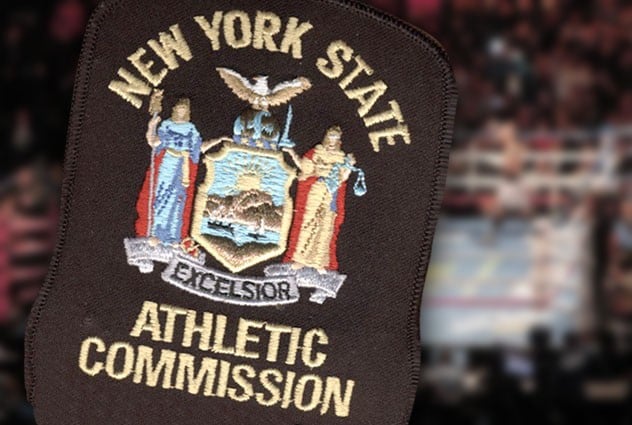Twenty Questions for the New York State Athletic Commission

On January 27, 28, and 29, “The Ring” posted a three-part series entitled “Politics, Problems, and Power at the New York State Athletic Commission.” If the past is a guide, people will shake their heads, say the commission shouldn’t operate this way, and move on.
This time, let’s not just move on. Fighters’ lives and the proper functioning of a government agency are at stake. That’s more than a rhetorical device.
I urge members of the media, the boxing community, fans, and NYSAC employees to press for answers to the following questions:
(1) Why aren’t the use of erythropoietin (EPO), blood-doping, and meldonium banned by the New York State Athletic Commission?
(2) Do you think that having fighters urinate into a cup on fight night constitutes an adequate PED-testing program?
(3) Why aren’t the blood and urine samples that are collected by the NYSAC for PED testing sent to an accredited WADA laboratory?
(4) Who specifically is making policy with regard to performance enhancing drugs at the New York State Athletic Commission?
(5) It appears as though only one of the five NYSAC commissioners is regularly engaged in the work of the commission. Three of the five commissioners are serving on holdover terms, one of which expired in 2014. One of the commissioners has significant cognitive issues. Is this an appropriate model for government regulation?
(6) Explain the discrepancy between the amount that some fighters are being paid for big fights in New York and the purses that are reported to the NYSAC? Do you think that these discrepancies might adversely effect the collection of tax revenue by the State of New York? Do you think that these discrepancies might also, among other things, adversely effect the payments made to the referees and judges who are assigned to work these fights?
(7) What is the total annual cost of operating the New York State Athletic Commission and a breakdown of these costs (e.g. salaries, travel expenses, office space, etc.)?
(8) Why are there people assigned to the NYSAC who receive substantial salaries and who high-ranking commission officials have never met or even heard of?
(9) Until recently, applicants for a promoter’s license in New York were required to list the name of each shareholder. Why was this requirement removed from the application in 2018?
(10) What is the NYSAC procedure for follow-up when a referee mishandles a situation that occurs during a fight or a judge turns in a scorecard that seems at odds with what transpired in the ring? Cite specific instances during 2019 when this procedure was implemented.
(11) Do you think that, as part of their training, every referee, ring doctor, and inspector should be shown a video of Magomed Abdusalamov’s fight against Mike Perez including the nine one-minute segments in Abdusalamov’s corner between rounds?
(12) Why doesn’t the NYSAC regulate the use of smart phones and other electronic aids used by a fighter’s corner to gain a competitive advantage during a fight?
(13) Why doesn’t the NYSAC utilize instant video review during fights?
(14) Why are UFC cutmen allowed to use a bottle of adrenaline that has already been opened for multiple fighters while cutmen who work for other promoters or fighters have to use a new bottle for each fighter?
(15) Why is UFC allowed to give snack bags to its fighters after a pre-fight urine sample has been taken from them while other promoters’ fighters are forbidden to eat anything after the urine sample is taken without being retested?
(16) Why are UFC combatants allowed to drink Bodyarmor Alkaline SportWater (the “official sports drink of UFC”) with “potassium-packed electrolytes” while other fighters are not allowed to drink anything with electrolytes after giving a pre-fight urine sample?
(17) Please explain in detail the circumstances surrounding Kelvin Gastelum’s weigh-in on November 1, 2019, for the UFC 244 card at Madison Square Garden. Your answer should include, among other things, an explanation of why two experienced NYSAC deputy commissioners who usually oversee weigh-ins at Madison Square Garden were removed from their duties at the last minute.
(18) Why was Marcus McDaniel (a fighter with a bullet in his head) allowed to fight at Madison Square Garden on June 8, 2019, without a New York license?
(19) Why has the NYSAC Medical Advisory Board met only twice in the past twenty-seven months?
(20) What precisely should an NYSAC inspector do if a fighter collapses in the dressing room after a fight? Be specific. If your answer is “call a doctor,” explain precisely how the inspector should call a doctor. Have all NYSAC inspectors been advised of this procedure?
New York does a better job of regulating fights than most states. Given the massive amount of money that the NYSAC spends each year, it should. But the NYSAC can, and should, do a better job. If the series posted by “The Ring” this week results in one positive reform at the NYSAC, it will add to the “The Ring’s” many contributions to the sport and business of boxing.
Thomas Hauser’s email address is [email protected]. His most recent book – A Dangerous Journey: Another Year Inside Boxing – was published by the University of Arkansas Press. In 2004, the Boxing Writers Association of America honored him with the Nat Fleischer Award for career excellence in boxing journalism. On June 14, 2020, Hauser will be inducted into the International Boxing Hall of Fame.















